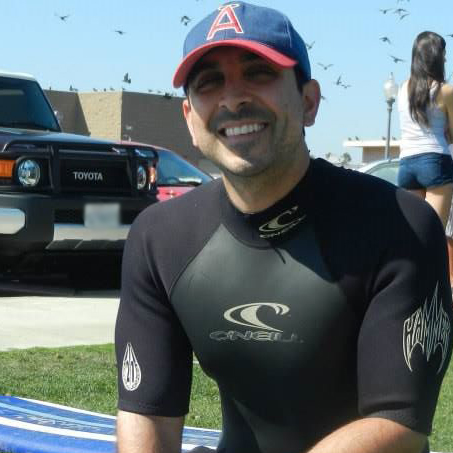Lose Weight > Common Sense To Lose Weight > Common Sense Article > A Solution-Focused Approach to Weight Loss
A Solution-Focused Approach to Weight Loss
 What do you do when you don’t achieve the weight loss results you’re looking for?
What do you do when you don’t achieve the weight loss results you’re looking for?Do you resolve to cut calories even more, try harder to resist temptations, or log extra treadmill time? These ideas could work—if you’ve been doing less than what you know you need to do to lose weight in the first place.
But chances are that these ideas don't fix the real problem. If you already have a hard time sticking to your eating and exercise goals, then making these goals even more strict (and difficult to manage) will only make things worse. Like Einstein said, "doing the same thing over and over again, and expecting different results," is insanity—and doing even more of the same old thing is even crazier. If you want different results, you need to think outside of the box and do things differently.
But what should you do differently, exactly? Is it just a guessing game, or is there some way to quickly find and focus in on solutions that will actually work for you?
There is a way to find the right solutions, and it starts with asking yourself the right questions. Here are four simple techniques you can use to stop guessing and start asking questions that focus on solutions instead of problems.
1. Look for the exception that proves the rule.
No problem happens all the time. No matter how often you don’t do as well as you’d like, there are always times when you do better than others, and it’s usually not an accident—there’s something about these positive times that makes your work much easier. The trick is to figure out what that something is, and how you can make it happen more often.
A good way to do this is to remember a recent time when things went well, and simply ask yourself what you did differently that time, or what was different about that situation. For example, was it easier to make the right choice because you were in a better mood? If so, what got you in that mood, and how can you get that to happen more often? What were you thinking about or doing the last time you made the choice you’d like to make most of the time? Can you find a way to spend more time thinking or doing that (or something similar) now?
2. Activate your imagination with the Miracle Question.
The Miracle Question is a great way to help yourself focus on solutions. Imagine that tonight while you’re sleeping, a miracle is going to happen that will completely solve the problem you are struggling with, once and for all. How will you know, when you wake up, that the miracle has happened and the problem is solved? What will be different for you—how will you think, act, or feel differently once the problem has been solved? What will be different about the day ahead of you? Are these questions already helping you think or feel differently now, at least a little bit? How can you make this happen more often?
3. Find the good intention behind the “bad” behavior.
Almost every persistent behavior happens for a good reason—no matter how many problems it may cause. You rarely do the “wrong” thing because that’s what you want to do, or because you literally can’t stop yourself—you do it because there is some payoff. And if you don’t like the negative side-effects (like weight gain) that come with a particular behavior (like overeating), your best bet will probably involve finding a way to get the payoff without those undesirable side-effects.
So if you’re having trouble resisting that sweet tooth of yours, for example, don’t waste time blaming yourself or trying to figure out what’s wrong with your willpower. Ask yourself what the payoff really is. Is it simple pleasure, emotional comfort, or relief from boredom or other unwanted feelings? Then ask yourself what you can do that would give you that same payoff, without the extra calories.
4. Predict your way to success.
Bad habits are often the product of self-fulfilling prophecies. You expect yourself to experience a problem, and then you do—again and again. You can interrupt this cycle by trying to predict your own behavior in advance. Before you get out of bed in the morning, take a minute to predict how you’re going to handle the potential problems you may encounter that day. What are the chances that you’ll have the problem again today? Pick an actual number—is it 100, 60, or 34 percent likely? What specific events, thoughts or feelings might make it more likely that you’ll face (or avoid) the problem? When and where are these events likely to happen? Who else is going to be involved? What can you do to influence this course of events and increase the odds in favor of not having the problem today?
Keep in mind that you’re not trying to convince yourself you can handle or avoid the problem you want to work on. This is not an exercise in positive thinking, but rather an effort to look at things differently and approach your problems in new ways. Instead of asking yourself why you have a particular problem, or what you do to “cause” this behavior, do the exact opposite. Focus on why you do things "right" and try to increase the odds of that happening more often.
Because the tendency to slip back into problem-focused mode is so strong, it will be important for you to check out your own assumptions and the focus of your questions on a regular basis.
You’ll know you’re on the right track when:
- You focus on things that go well more often than things that don't.
- You focus on concrete ways that things can be different and how to make those changes right now. (You’re not thinking about how bleak things may look.)
- You believe there are good reasons why you do things that cause problems, and that you can find alternative solutions that don’t have the undesirable side effects. Having problems doesn't mean something is wrong with you—just that you’ve outgrown a particular solution and are ready to find a new one.
- You take action so that your odds of beating your problem today are pretty good.
Related Articles
-
If Diets and Weight Loss Programs Leave You Cold - Start Your Own!
Copyright ?Donovan Baldwin http://nodiet4me.comAnything that I wri
-
Human Gene Modification Is The Latest Medical Breakthrough on Obesity
WHO reported that there are already 1 bi
-
The #1 Dynamite Key For Exploding Your Weight Loss While Exercising Far Less
Have you ever noticed that the #1 exercise of choice among those tr
-
Food Addiction
Chocolates, cakes, ice creams, marshmallows, name it and you抣l se
-
Top 7 Motivational Weight Loss Tips
Here are some great motivational weight loss tips. They will not o
-
7 Easy Ways to Get Your Weight Loss Diet to Work
Although it’s now clear that the key to long-term weight loss is based
- DON'T MISS
- Why You Should Train Less (But Smarter!)
- 10 Tips to Maintain Health and Beauty
- Quick Weight Loss Secrets - Unique Ways To Lose Weight Fast
- Losing Weight After Pregnancy
- Theres No Such Thing as a Lack of Willpower
- Foods For Your Mood
- Is Mindless Eating Making You Fat?
- Reducing Your Weight Naturally With Calorie Burning Herbs
- Diet Pills And Safe Weight Loss A Quick Guide To Diet Pills
- Benefits of Fiber in Weight Loss




